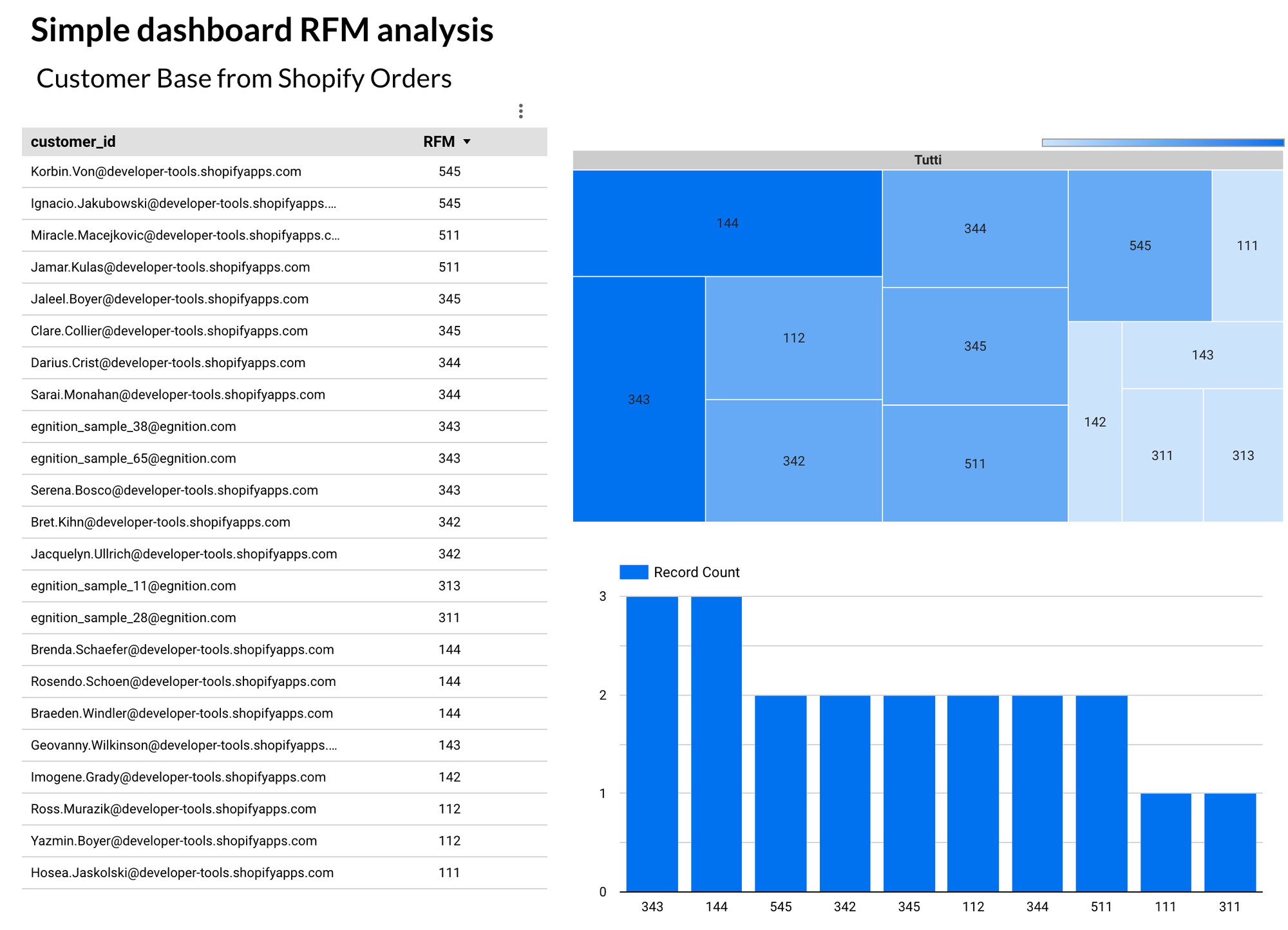Actionable Tips for Improving Your Conversion Rate Based on Customer Segmentation

In today’s competitive digital landscape, driving conversions is more crucial than ever. Businesses must move beyond broad strategies and adopt targeted approaches that resonate with specific customer segments.
One of the most effective ways to do this is by leveraging customer segmentation—a strategy that divides your customer base into distinct groups based on behavior, demographics, or purchasing patterns. The goal is to tailor your marketing efforts to these segments, increasing relevance, engagement, and conversions.
RFM analysis is a key framework for effective customer segmentation. This method categorizes customers based on three core factors: recency (how recently a customer made a purchase), Frequency (how often they buy), and Monetary Value (how much they spend). Let’s explore how this framework works and explore actionable strategies for improving conversion rates based on customer segmentation.
Understanding RFM Segmentation
RFM Segmentation provides a data-driven approach to predict customer behavior and prioritize marketing efforts. By scoring customers based on the three criteria (Recency, Frequency, and Monetary Value), businesses can identify high-value customers, those at risk of leaving, and those who need a little extra push to convert.

1. Recency: How recently did the customer purchase?
2. Frequency: How often does the customer purchase?
3. Monetary Value: How much does the customer spend on average?
Based on these scores, you can categorize your customer base into different segments like "Champions," "Loyal Customers," "Potential Loyalists," and more.
Each segment requires a unique marketing approach to maximize engagement and conversions.
If you want to analyze your customer segment, below is the link to the tutorial.

Actionable Strategies for Different Customer Segments
To optimize your conversion rates, creating personalized strategies for each customer segment is essential.
Below are actionable tips tailored to various RFM segments:
1.Champions
Who They Are: Your best customers purchase frequently and spend significantly. They are often brand advocates and early adopters.
Strategy:
- Reward them with exclusive offers, early access to new products, or VIP programs.
- Encourage them to leave reviews and share their experiences on social media.
- Keep them engaged with personalized thank-you messages and loyalty rewards.
Example: A fashion retailer could offer "Champions" a sneak peek of the upcoming collection and a special discount as a token of appreciation.
2.Loyal Customers
Who They Are: These customers purchase regularly and are responsive to promotions but might not be your biggest spenders.
Strategy:
- Introduce them to premium products or bundles to increase their average order value (AOV).
- Ask for feedback and encourage them to refer friends in exchange for rewards.
- Send personalized offers based on their past purchases.
Example: A beauty brand could send a tailored email campaign suggesting complementary products based on their previous skincare purchases.
3.Potential Loyalists
Who They Are: These customers have made a few purchases and show promise to become loyal buyers.
Strategy:
- Engage them with loyalty programs or long-term offers like membership discounts.
- Encourage cross-selling by recommending products in different categories.
- Provide educational content that helps them see the value in your brand.
Example: An online bookstore could introduce a membership plan that offers free shipping and discounts on future purchases to entice these customers to return.
4.Recent Customers
Who They Are: Customers who have just made their first purchase.
Strategy:
- Ensure a smooth onboarding experience with helpful emails or tutorials.
- Offer immediate assistance or post-purchase support to build trust.
- Send follow-up messages with personalized recommendations based on their initial purchase.
Example: A tech gadget store could send a quick-start guide and a discount code for accessories to recent buyers, encouraging a second purchase.
5.Promising Customers
Who They Are: Customers who have shown interest but haven’t yet become loyal buyers.
Strategy:
- Increase brand awareness with targeted ads and content that highlight your unique value propositions.
- Consider offering free trials or samples to remove barriers to purchase.
- Create urgency with time-sensitive offers.
Example: A subscription service could offer a one-month free trial to promising customers who have browsed but haven’t committed.
6.Customers Needing Attention
Who They Are: Customers who haven’t purchased in a while but have previously shown interest.
Strategy:
- Re-engage them with personalized product recommendations or limited-time offers.
- Use remarketing campaigns to remind them of items they previously viewed or left in their cart.
- Send surveys to understand their needs and adjust your messaging accordingly.
Example: A home decor brand could send a personalized email with a discount code and suggestions based on the customer’s browsing history.
7.About to Sleep
Who They Are: Customers at risk of leaving, who haven’t engaged recently.
Strategy:
- Reactivate them with special promotions or discounts for memberships.
- Highlight new arrivals or best-sellers to spark their interest again.
- Use win-back email campaigns with compelling subject lines and offers.
Example: A fitness brand could offer a personalized deal like "20% off your next order" to re-engage a customer who hasn’t purchased in several months.
8.Price-Sensitive Customers
Who They Are: Customers who are driven by getting the best deal.
Strategy:
- Send discount alerts and highlight promotions on high-rated products.
- Offer value bundles or bulk purchase discounts to maximize their spend.
- Use targeted messaging that emphasizes savings and value.
Example: A grocery delivery service could highlight budget-friendly product bundles or notify these customers about upcoming sales.
9.Can’t Lose Them
Who They Are: High-value customers showing signs of disengagement.
Strategy:
- Seek feedback to identify pain points or reasons for reduced activity.
- Offer personalized product suggestions based on their purchase history.
- Provide exclusive incentives to win them back, such as limited-edition items or loyalty rewards.
Example: A luxury brand could offer a personalized gift or early access to new collections to rekindle interest from a high-value customer.
10.Hibernating Customers
Who They Are: Customers who haven’t purchased in a long time and show low engagement.
Strategy:
- Send personalized emails with product recommendations based on their previous interests.
- Offer time-sensitive deals or free shipping to entice a return.
- Use emotional triggers like nostalgia in your messaging.
Example: An online bookstore could send a “We miss you” email featuring a curated list of new books in genres the customer previously bought.
11.Lost Customers
Who They Are: Customers who have stopped purchasing altogether.
Strategy:
- Use bold reactivation campaigns that emphasize new offerings, discounts, or brand changes.
- Run remarketing ads across social media and search platforms to regain visibility.
- Consider offering incentives for returning, such as extra loyalty points or discounts.
Example: A coffee subscription service could offer a significant discount on a first month’s renewal to encourage a lost customer to re-subscribe.

Improving your conversion rate isn’t just about driving more traffic to your site — it’s about understanding your customers and delivering the right message, at the right time.
By leveraging RFM segmentation and implementing targeted strategies for each segment, you can enhance customer engagement, increase loyalty, and, most importantly, boost your conversion rates.

